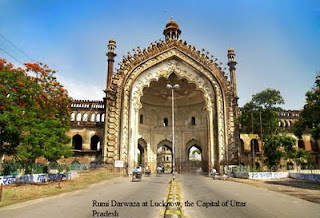History of Uttar Pradesh

The territory that constitutes present day Uttar Pradesh was made home by the Aryans in 2000 BC. The ancient kingdom of Kosala of which Rama of Ramayana was king was located in the state of Uttar Pradesh . According to tradition, Krishna , the preacher of Bhagwat Gita, was born in the city of Mathura . Uttar Pradesh remained part of the most of the great kingdoms of India including the Mauryan (320-200 BC), Kushan (100-250 AD) and Gupta (350-600 AD) empires. After the downfall of the Guptas, Harshavardhana rose into prominence with Kannauj at his capital. After Harshavardhana’s death, his empire fell into pieces. There arose many kingdoms which were ruled mostly by Rajputs. Uttar Pradesh came under the control of Delhi Sultanate and later the Mughal Empire. Agra and Fatehpur Sikri served as the capital cities of Akbar, the greatest Mughal Emperor of India. After the disintegration of the Mughal Empire, the state was ruled by different rulers. Chief among them were the Nawabs of Ou


